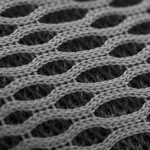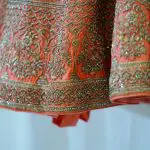Do you find yourself struggling to stay warm during the cold winter months? Two popular fabric choices for cold weather are fleece and flannel. Both fabrics have their pros and cons, but which one is right for you? In this article, we will compare and contrast the textures, weights, durability, and moisture-wicking capabilities of fleece and flannel to help you make an informed decision on which fabric to choose.
Firstly, let’s take a look at fleece. Fleece is a synthetic fabric that is known for its softness and warmth. It is made from polyester fibers that are woven together to create a fluffy and insulating material. Fleece is a popular choice for outdoor activities such as hiking and skiing because it is lightweight, breathable, and dries quickly. However, it is not as durable as other fabrics and can pill over time.
In contrast, flannel is a woven fabric that is made from cotton, wool, or synthetic fibers. It has a thicker texture than fleece and is often brushed to create a softer feel. Flannel is known for its warmth and durability, making it a popular choice for bedding and pajamas.
Overall, both fleece and flannel have their unique characteristics that make them suitable for different purposes.
Table of Contents
What is Fleece?
Looking for a cozy and warm fabric for the winter season? Look no further than fleece! Fleece is a synthetic fabric made from polyester fibers that are brushed to create a soft, fuzzy surface. It’s a popular choice for winter clothing such as jackets, hats, and blankets because of its warmth and insulation properties.
One of the main benefits of fleece is its ability to trap heat. The fibers in fleece create tiny air pockets that retain body heat, keeping you warm and cozy even in the coldest of temperatures. Additionally, fleece is a lightweight fabric, making it an ideal choice for layering under heavier coats or jackets.
Another advantage of fleece is its durability. Unlike natural fabrics such as wool or cotton, fleece is resistant to shrinking, stretching, and pilling. It can withstand frequent washing and drying without losing its shape or texture, making it a practical choice for everyday wear.
Overall, fleece is a versatile and reliable fabric that’s perfect for staying warm during the winter months.
What is Flannel?
So, you wanna learn about flannel?
Well, flannel is a soft and warm fabric that’s perfect for cold weather. It’s made from wool, cotton, or synthetic fibers that are brushed to create a fuzzy surface, which provides extra insulation.
Flannel is commonly used for clothing such as shirts, pajamas, and jackets, as well as for bedding and blankets.
Properties of Flannel
Flannel is so cozy and soft, making it the perfect fabric choice for staying warm during the colder months. Here are four properties of flannel that make it such a popular choice:
-
Insulation: Flannel is made from thick, brushed cotton, which traps body heat and keeps you warm.
-
Breathability: Despite its insulation properties, flannel is also breathable, which means it allows air to circulate and prevents you from getting too hot.
-
Durability: Flannel is a tough fabric that can withstand a lot of wear and tear, making it a great choice for everyday use.
-
Comfort: There’s nothing quite like the feeling of snuggling up in a cozy flannel blanket or wearing a pair of flannel pajamas on a cold winter night. The softness and comfort of flannel make it a popular choice for bedding, loungewear, and more.
Uses of Flannel in Cold Weather
With its excellent insulation and breathability, flannel is a versatile fabric that can be used for a variety of cold weather items.
One popular use of flannel is for pajamas and sleepwear. Flannel pajamas are cozy and warm, making them perfect for cold winter nights. They’re also breathable, which means you won’t overheat while you sleep.
Flannel is also great for blankets and throws, as it provides a soft and warm layer that can keep you comfortable while watching TV or reading a book.
Flannel is also used for shirts, particularly in the fall and winter months. Flannel shirts are often thicker and heavier than regular cotton shirts, providing extra warmth and insulation. They’re perfect for layering, so you can wear them over a t-shirt or under a jacket for added warmth.
Flannel is a classic fabric that never goes out of style, making it a great choice for cold weather clothing items that you can wear year after year.
Texture Comparison
When it comes to comparing the textures of fleece and flannel, there are two key factors to consider: softness and fuzziness. Fleece is known for its fluffy texture, while flannel has a more brushed, smooth feel. Depending on your preferences and needs, one fabric may be more appealing than the other in terms of texture.
Softness
You’ll feel like you’re wrapped in a cozy cloud with the softness of fleece. This fabric is made from synthetic materials like polyester, making it incredibly plush and fluffy to the touch. Fleece is a popular choice for blankets, scarves, and jackets because of its softness and ability to keep you warm in cold weather.
Here are four things you can do to fully appreciate the softness of fleece:
- Rub your hand against the fabric, feeling the plush fibers against your skin.
- Cuddle up in a fleece blanket and feel the warmth and softness envelop you.
- Wear a fleece jacket and feel the softness against your arms and body.
- Wrap a fleece scarf around your neck and feel the cozy softness against your skin.
Flannel, on the other hand, is also soft but in a different way. It is made from 100% cotton, which gives it a more natural and breathable feel. Flannel has a brushed texture that makes it feel soft and fuzzy, but not as fluffy as fleece. It is a common choice for pajamas, sheets, and shirts because of its softness and comfort.
Fuzziness
Don’t miss out on the cozy fuzziness that flannel brings to your winter wardrobe. Fleece may be soft, but flannel takes comfort to the next level with its fuzzy texture. The raised fibers on the surface of flannel create a warm and inviting feel that’s perfect for snuggling up on a cold day. Whether you’re wearing flannel pajamas or a flannel shirt, you’ll feel like you’re wrapped in a soft, fuzzy blanket all day long.
To really understand the difference in fuzziness between fleece and flannel, take a look at this comparison table:
| Fabric | Fuzziness |
|---|---|
| Fleece | Smooth |
| Flannel | Fuzzy |
It’s clear that flannel wins in the fuzziness department. So, if you want to feel extra cozy this winter, opt for flannel over fleece. You won’t regret it.
Weight Comparison
When it comes to choosing the right fabric for cold weather, weight is an important factor to consider. Lightweight fleece and heavier flannel are two popular options, each with their own benefits.
In this section, you’ll learn more about the differences between these fabrics and which one might be the best choice for your needs.
Lightweight Fleece
If you’re looking for a cozy layer to keep you warm on chilly days, lightweight fleece is a great option that will make you feel like you’re wrapping yourself in a soft, fluffy cloud. Unlike thicker fleece, which can be bulky and restrictive, lightweight fleece is breathable and flexible, allowing you to move freely while still providing warmth. It’s a popular choice for outdoor activities like hiking or skiing, as well as for everyday wear.
To give you a better idea of the differences between lightweight fleece and flannel, here’s a comparison table:
| Lightweight Fleece | Flannel | |
|---|---|---|
| Material | Synthetic | Cotton |
| Warmth | High | Medium |
| Softness | Very soft | Soft |
| Breathability | High | Low |
| Durability | Moderate | High |
| Care | Machine washable, quick-drying | Machine washable, may shrink |
As you can see, lightweight fleece is made from synthetic materials, while flannel is made from cotton. Fleece is generally warmer and softer than flannel, and also more breathable. However, flannel is more durable and may be a better choice if you’re looking for a long-lasting fabric. When it comes to care, both fabrics are machine washable, but flannel may shrink if not washed properly. Overall, the choice between fleece and flannel comes down to personal preference and the specific use you have in mind.
Heavier Flannel
You’ll love the cozy warmth of heavier flannel on chilly days. This fabric is thick and tightly woven, making it perfect for keeping you warm in cold weather. Flannel is usually made from wool or cotton, so it’s soft and comfortable against your skin.
Here are some benefits of choosing heavier flannel:
- It’s very durable and can last for many years with proper care.
- Flannel is great for layering, allowing you to stay warm without adding too much bulk.
- This fabric is versatile and can be dressed up or down, making it a great choice for a variety of occasions.
When it comes to choosing between fleece and flannel, heavier flannel is a great option for those who want a durable and versatile fabric that will keep them warm in cold weather. With its cozy warmth and comfortable feel, you’ll love wearing flannel on chilly days.
Durability Comparison
When it comes to choosing a fabric for cold weather, durability is an important factor to consider. You may be wondering which fabric is more long-lasting: fleece or flannel?
Well, let’s take a closer look at the longevity of fleece and the durability of flannel to help you make an informed decision.
Longevity of Fleece
Fleece is a durable fabric that can withstand frequent washing and wear, making it a great choice for those looking for long-lasting cold weather clothing options. However, while fleece may be durable, it does have a limited lifespan. The longevity of fleece depends on several factors such as the quality of the material, the frequency of use, and how well it is cared for.
To give you an idea of how long fleece can last, here’s a comparison table of the average lifespan of fleece versus flannel:
| Material | Lifespan |
|---|---|
| Fleece | 3-5 years |
| Flannel | 5-7 years |
As you can see, fleece has a shorter lifespan compared to flannel. This is because fleece tends to pill and lose its softness over time, especially if it is washed frequently. However, with proper care and maintenance, you can extend the lifespan of your fleece clothing. It’s important to follow the care instructions on the label, avoid using fabric softeners, and wash your fleece clothing separately from other clothing items to prevent pilling.
Durability of Flannel
Flannel’s durability can be seen in its ability to withstand years of use, remaining strong and cozy through countless winters. Here are four reasons why flannel is a durable fabric choice for cold weather:
-
Flannel is made from a tightly woven cotton or wool blend, which makes it resistant to tearing and fraying.
-
Flannel is often brushed on both sides, which not only creates a soft and cozy texture, but also adds thickness and insulation to the fabric.
-
Flannel is easy to care for, as it can be machine washed and dried without losing its shape or texture.
-
Flannel comes in a variety of weights, so you can choose a heavier weight for added durability and warmth.
Overall, flannel is a great choice if you’re looking for a durable fabric that will last for years to come. Its combination of strength, softness, and easy care make it a practical and comfortable option for cold weather clothing and bedding.
Moisture-wicking Comparison
You’ll feel the difference when you’re out in the snow – flannel may be soft, but fleece’s moisture-wicking properties make it the superior choice for keeping you cozy and dry. Flannel is made from cotton and is absorbent, which means it can hold onto moisture from sweat or snow. This can cause discomfort and even hypothermia in extreme conditions.
On the other hand, fleece is made from synthetic materials like polyester, which are hydrophobic, meaning they repel water. Fleece is designed to pull moisture away from your skin and into the fabric where it evaporates. This makes it the perfect choice for outdoor activities or sports where you may be sweating or in contact with snow.
To compare the moisture-wicking capabilities of fleece and flannel, take a look at this table:
| Fabric | Moisture-Wicking | Absorbency | Quick-Drying |
|---|---|---|---|
| Fleece | High | Low | High |
| Flannel | Low | High | Low |
As you can see, fleece wins out in all three categories. Its high moisture-wicking and quick-drying properties make it the more practical choice for outdoor activities in cold weather. While flannel may be cozy, it’s not the best option if you want to stay dry and comfortable.
Choosing the Right Fabric for Your Needs
When it comes to staying warm and comfortable in chilly conditions, it’s important to consider the specific needs and activities you’ll be engaging in before choosing a fabric. Are you going to be outdoors for an extended period of time, or will you only be outside for short periods? Do you plan to engage in any physical activities, or will you be mostly sedentary? These are important questions to ask yourself before making a decision.
For those who plan to be active in cold weather, fleece is often the better choice. Fleece is a highly breathable fabric that allows air to circulate freely, which helps to regulate body temperature and prevent overheating. It’s also lightweight and stretchy, which makes it ideal for physical activities like hiking, skiing, and snowboarding.
On the other hand, flannel is a heavier, more insulating fabric that’s better suited for sedentary activities like sitting around a campfire or watching a football game.
Ultimately, the choice between fleece and flannel comes down to personal preference and the specific needs of the individual. If you’re someone who’s always on the move, fleece may be the better choice, while those who prefer to take it easy in cold weather may find flannel to be more comfortable.
Regardless of which fabric you choose, it’s important to layer properly and stay dry to maximize warmth and comfort in cold conditions.
- How Does Ring Spun Cotton Affect Garment Fit and Shape Retention? - August 13, 2024
- What Are the Challenges in Producing Ring Spun Cotton? - August 13, 2024
- Is Ring Spun Cotton Suitable for Plus-Size Clothing? - August 13, 2024






